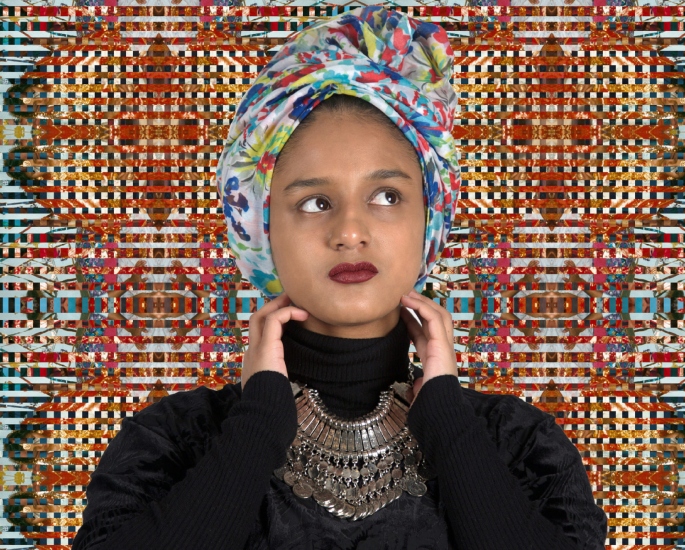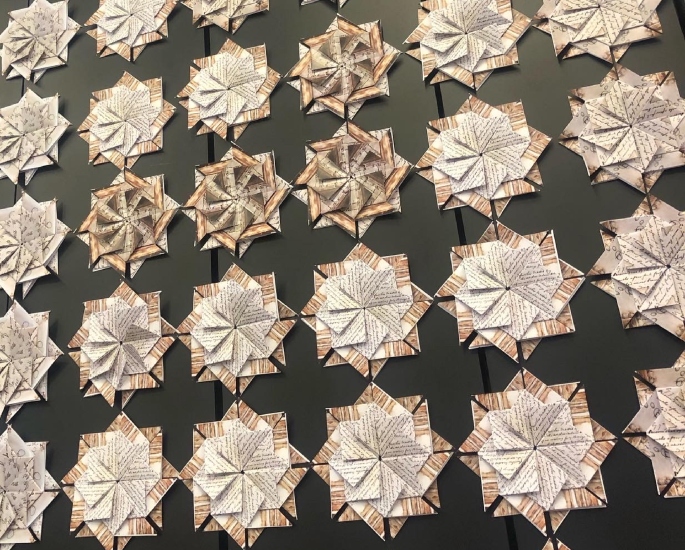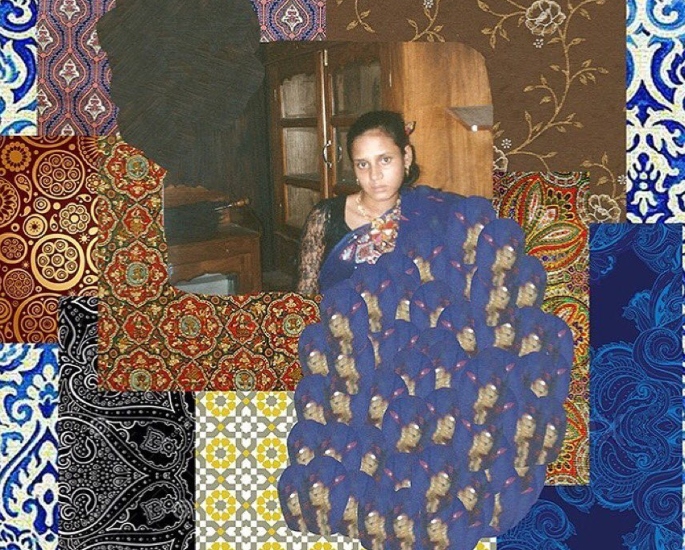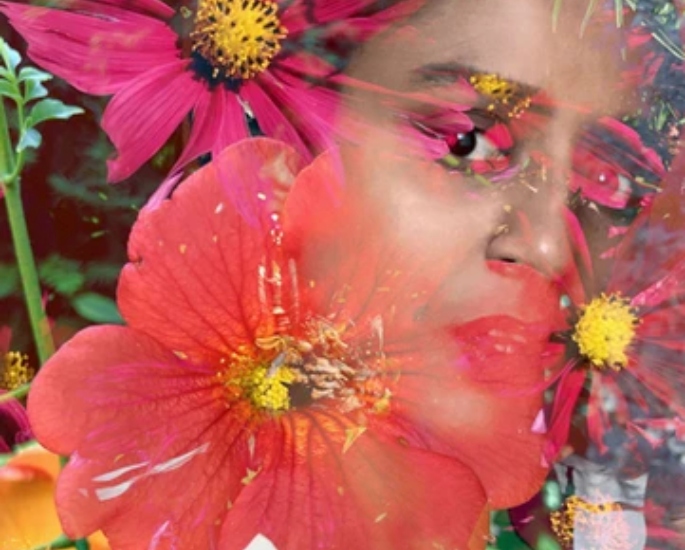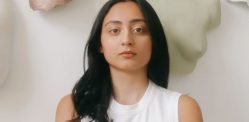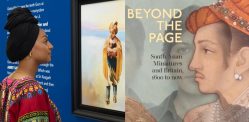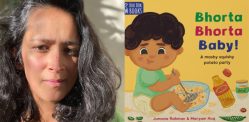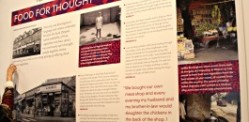"I want my art to be a space for conversation"
Nilupa Yasmin is an award-winning artist who explores a range of stories, experiences and narratives in her innovative work.
With a keen eye for emotive photography and intricate sculpting, Nilupa tries and succeeds in expanding the confines of art and craft.
Whilst exploring the cultural ideas and traditions of her Bangladeshi heritage, she also manages to capture themes of identity, gender, anthropology and nature.
What’s also special about the young creative is her keen collaborations with various communities to curate works of art.
This togetherness and embrace of different journeys and memories help Nilupa Yasmin to gauge her work toward specific narratives.
She achieved this aim once again in her thrilling piece ‘They and Their Children Are Slaves’ which was showcased at the These Things Matter exhibition in London.
Working with seven contemporary artists in which Nilupa Yasmin was one of those chosen, the project explored the devastating and long-term effects of the British Empire.
DESIblitz caught up with the young talent to dive further into the exhibition, her path into art and the motivations behind her commissions.
Can you tell us about your journey into art?
I feel I’ve always had a knack for making things and would spend countless hours making miniature origami sculptures as a kid.
I’ve studied art from GCSE level, going on to college and later university to study for a BA in Photography.
From college onwards, I became a lot more serious about pursuing art and was encouraged by my parents to study what makes me feel happy.
I was fortunate that my degree constantly encouraged me to explore the many shapes a photograph can take and that’s when I first began to weave, cut and sculpt my images.
I’ve since studied on to do a Post Grad Degree in Art Education and recently finished my MA in Photography Arts.
Are there any artists that have impacted your creative style?
Oh, there are so so many – not all photographic artists which is probably why I’m exposed to so many different types of art.
An all-time favourite would be Raisa Kabir, an interdisciplinary artist, educator and weaver who I discovered in my BA.
Her work talks about colonial legacies and I’ve always been in awe of her work and the immaculate way
she is able to create such powerful conversations surrounding it.
She’s currently exhibiting in a group show at the Craft Council in London and it’s defo worth a visit!
“Another who jumps to mind would be Sutapa Biswas who is a conceptual mixed media artist.”
Her work dwells with questions of identity, and ideas of dislocation and belonging, which as an artist of colour, I find wholesome to be able to look up to.
She’s also currently exhibiting at Newlyn Art Gallery in Cornwall, one not to miss. Here is my little artist plug!
Can you tell us about your ‘They and Their Children Are Slaves’ piece?
‘They and Their Children are Slaves’ is an installation piece.
It comprises of photographic sculptures made out of images of the South Carolina legislation ‘Act for the better ordering of slaves’ from 1701.
The regulations show the regime of punishment and judicial killing imposed to maintain power by white people over enslaved black people and Native Americans.
This Act was only one in a long line of legislative measures, renewed frequently, imposing these regulations.
The 1701 text had disappeared from historical records by the 19th century, but a single known copy survives, bound into a collection of manuscripts at the Bodleian Library.
For me, when I first walked into the Bodleian and viewed the artefact, I was excited.
Because without knowing its contents I was automatically attracted to the pages and their tactility.
It was later from learning how horrible the words were on these beautiful pages that I did feel disgusted that this exists and was a livid experience for so many.
I wanted my work to do that – to attract but further force the interaction that what we always feel to be enticing isn’t always good.
What type of reaction did you get?
I was there on the opening night and I received the exact reaction I wanted from the work.
I stood and watched many people walk toward the piece because of how inviting it is and how it instantly catches your eye when you walk into the space.
“It is then that you realise what every intricate fold has hidden inside it.”
I would like future audiences to really consider what this means for us in the present and how we use this to educate others in the future.
The work is pretty and mesmerising and exciting to look at, and that was all intentional.
I want the work to give you those reactions because the aftermath is what makes you consider how it impacts the work and our perceptions.
What was it like to be part of the These Things Matter exhibition?
It’s been an amazing experience to be part of this exhibition and get to work with the Museum of Colour, Fusion Arts and Bodleian Library teams.
The support and encouragement to make work that matters start from the foundations of where projects like these come from.
And having a network of people constantly encouraging you to push it out of the box, literally in my case, is incredible.
One of the most positive elements of this work is to meet and engage with like-minded artists and learn from one another. Especially when we are working in such different mediums.
It’s important to have this work on show and to keep on talking about topics that may not always be easy to share and remember.
But I’ve said it a lot throughout this process; if we don’t talk about it, no one else will. If we don’t make the work, no one else will.
For many people, exhibitions like this are their first outlook into stories that go untold because we no longer have access to them.
That’s why we need this work, and we need to keep on telling these stories.
The best part is, These Things Matter recognises this. We know this isn’t the end of an outcome, this is us starting the conversation.
Why is it important to produce work around your British Bangladeshi heritage?
There is such a lack of artists representing many minority communities and I am a part of one of those.
I want my art to be a space for conversation but also to educate.
“There’s so much I am learning every day about my British Bangladeshi identity.”
I choose to bring that into my work because it’s important to me.
I have been fortunate that the work I am making is connecting to others, others who feel it represents them too.
What it means to represent communities is a strong term to use, and I’m learning that in my work.
Do you think the art industry is becoming more inclusive?
There is always more progress to be made but no denying that doors are opening.
We are seeing more minority communities entering art spaces as producers, curators, directors and practitioners.
I believe there is a need for these conversations now more than ever.
The world we live in is constantly changing and it’s our job to use our art to keep on telling.
In terms of any difficulties I’ve faced, there isn’t one set experience that comes to mind.
But I have found that sometimes the topics I am making or working on are difficult to talk about and it instantly will make people lose interest or disengage.
I’ve found that making work that is doing the opposite of what I’m saying works in my favour.
That’s why works like these are so meaningful because you approach them not knowing what they’re talking about.
Sometimes you just have to let the work do the talking and take a back seat.
Can you tell us about your creative process?
Funnily enough, some of my favourite projects I’ve made have come from things that aggravate me.
Be it gender roles, identity conflict or decolonisation. It annoys me so I use art as an outlet.
“I also read a lot, I take a lot of time on research and it helps to inform the way my work is being made.”
I like to sketchbook ideas and experiment. Each piece is definitely different.
I do make a lot of work with communities and they will inform what and how the works are made. Other pieces I like to do alone sat in my studio.
What would you say to budding artists looking to get into this space?
Don’t be afraid to make work that you’re passionate about.
If there are topics that mean something to you then that is enough for you to make work on them.
I am constantly telling my students to get their works out there and seen, attend portfolio reviews, apply to commissions, take part in talks, attend events and exhibitions.
Network is the buzzword.
No idea is ever too big or small to try and as long as you’re not harming anyone (please stick trigger warnings on sensitive works) then keep on making and trying.
As well as being such an intriguing character and advocate of art, Nilupa Yasmin also wants to educate people through her work.
The importance on this is vital for the artist in order to create a more inclusive and diverse industry.
However, art is also a medium to bring underrepresented experiences to the forefront, something in which Nilupa Yasmin herself is a trailblazer.
As well as a relenting work ethic, the creative is also a lecturer in Photography at Coventry University. So, her contribution to the artistic world is undeniable.
Check out more of Nilupa Yasmin’s work here.




















































